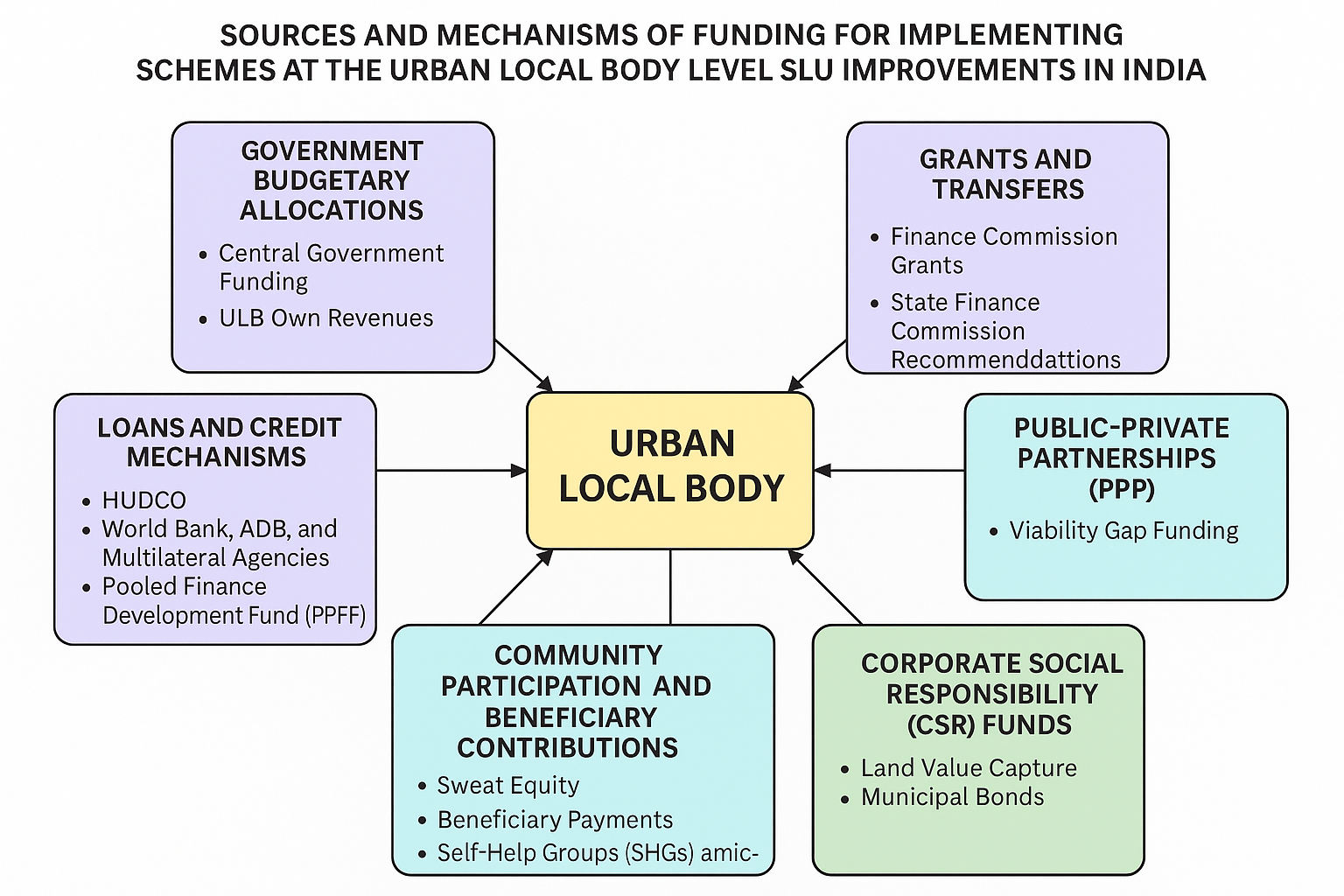
1 and 1 Government budgetary allowances
- Central government financing:
- Diagrams like Pmay -Urban (Pradhan Mantri Awas Yojana – Urbain) Provide direct funding for ULBs for the redevelopment of slums and affordable accommodation.
- Atal mission for rejuvenation and urban transformation (AMRUT) Includes the provisions for basic slides to slums.
- Funds are often transferred through State urban development departments ULBS according to project proposals.
- State government support:
- States have their own housing committees and urban development policies. For example, the Maharashtra Slum Rehabilitation Authority (SRA) model.
- States often co-fund central regimes (for example, Pmay-Ururnan follows a financing report of 60:40 Center: State for most states, 90:10 for the NE and states of the special category).
- ULB own income:
- Property tax
- User costs (for water, sanitation, etc.)
- Development fees and improvement samples
- Monetization of land (rental or sale of municipal land)
2 Subsidies and transfers
- Finance committee dealers:
- The 15th finance committee assigns subsidies directly to local urban organizations, including a party to improve urban services (indirectly benefiting from slums).
- Recommendations of the State Finance Committee:
- States governments allocate ULBS funds according to their reports from the Finance Committee.
3 and 3 Credit loans and mechanisms
- HUDCO (Housing and Urban Development Corporation LTD):
- Offers long -term and low interest loans to ULB for housing and basic services.
- World Bank, Bad and Multilateral Agencies:
- Fund for major urban development programs (for example, Tamil Nadu Urban Development Fund).
- ULB can indirectly access these funds through state governments.
- Grouped financial development fund (PFDF):
- Help smaller ULBs to access bond markets thanks to municipal bonds grouped together for infrastructure projects, including the improvement of slums.
4 Public-private partnerships (PPP)
- The phony redevelopment projects are increasingly implemented via PPP models, where:
- The developers obtain rights to commercially exploit land parties in exchange for residents of rehabilitating slums.
- Example: Mumbai SRA projects.
- Viability financing (VGF):
- The central government provides a VGF to make projects commercially viable for private developers.
5 Community participation and contributions from beneficiaries
- Equity of sweat:
- The redevelopment of in situ slums often uses community work as a contribution to the costs of the project.
- Payments of beneficiaries:
- Minimum contributions are taken from the inhabitants of slums in housing regimes (for example, under Pmay-Urban, a part of the nominal beneficiary is required).
- Self-assistance groups (SHG) and microfinance:
- Used for incremental improvements in housing and basic infrastructure upgrade.
6. Business Social Responsibility Fund (CSR)
- Companies are mandated (under the 2013 companies law) to invest 2% of their profits in CSR activities.
- Certain CSR initiatives finance housing, sanitation and education projects in slums.
7 Innovative financing mechanisms
- Capture of the value of the land (LVC):
- ULB captures a share of the increase in land value resulting from infrastructure improvements.
- The tools include improvement costs, the transfer of development rights (TDR), impact costs.
- Municipal obligations:
- Cities like Pune have collected funds through municipal links for water supply and sanitation, which has an indirectly impact on slums.
In shortFinancing at the ULB level for the improvement of slums is a Mixture of public financing (Union and State), internal resources of the ULB, loans, PPP, community contributions and innovative financing models such as municipal obligations and the capture of the value of land.


